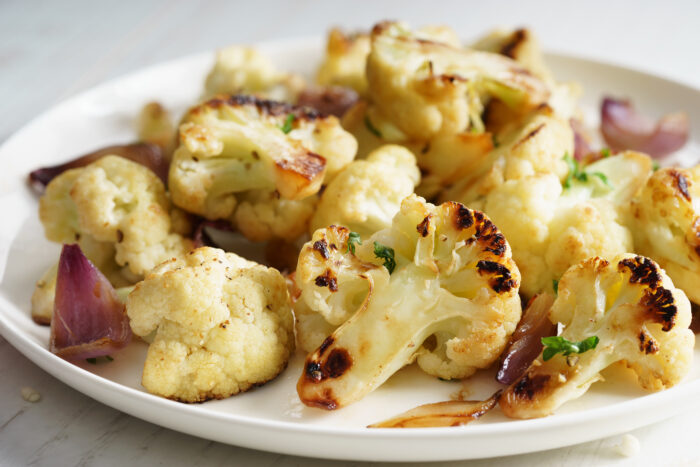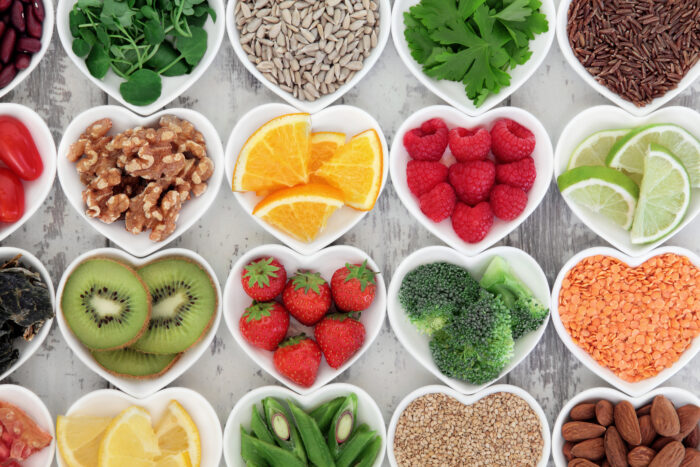February is American Heart Health Month, and the Avance Care Nutrition team wants to help you celebrate by sharing some advice to take better care of your heart. We all think it won’t happen to us, but heart disease is the leading cause of death in the United States. No matter how old you are, it is never too early or late to adopt various diet and lifestyle changes to lower your risk of heart disease.
A heart healthy diet is rich in fruits, vegetables, whole grains, nuts, legumes, and lean meats. One of my colleagues explores tips for adding more of these foods to your diet in a previous post, A Dietitian’s Tips To Improving Your Heart Health. I’m going to focus on one specific, single food you can add to your diet to improve your heart health and how to get more of it: beans!
Why Beans?
“Beans, beans, they’re good for your heart…” no really, they are! A bean is a seed or pod of any plant in the legume family, and they can count as a vegetable or protein serving in our diet according to US dietary guidelines. Additionally, they are a highly affordable and environmentally friendly food. Popular varieties include pinto, black, kidney, lima, and chickpeas. As a dietitian, one of the most common pieces of nutrition advice I find myself giving out is: eat more beans. This is both because they are a cost-effective nutrient powerhouse, but also because many people don’t eat them often and aren’t sure how to start. They have many different health benefits, but let’s focus on why they are so great for heart health specifically.
Low Saturated Fat and High Fiber
Beans naturally have a potent heart-disease-preventing combo of low saturated fat and high fiber. These are key nutrient patterns for lowering bad cholesterol levels, which is a primary risk factor for heart disease. Saturated fat directly contributes to raising bad cholesterol levels, and beans have little to none. Since they are also a good source of protein, beans can be used to replace meat which usually contains saturated fat, thus removing more of it from our diet.
Fiber, particularly soluble fiber, sticks to cholesterol as it moves through our digestive system and helps shuttle it out of the body before it can enter our bloodstream. Beans give us some of the biggest bang for our buck when it comes to fiber per serving, averaging 6 to 8 grams per ½ cup depending on the bean. For a deeper dive about how and why to lower your cholesterol, check out our previous blog, The Issue with Cholesterol and 5 Food Tips To Lower Your Levels.
Why Don’t Americans Eat More Beans?
According to national surveys of Americans about their eating habits, the top reasons people don’t eat beans include digestive discomfort, fear that they contain too many carbohydrates, and not knowing how to add them to meals and make them taste good. Let’s tackle each of these issues to make eating beans easier and more enjoyable for you and your family.
How to Prevent (GAS)trointestinal Discomfort from Beans
Yes, beans can cause some gas if you’re not used to eating them on a regular basis, so add them slowly! Our gut is adaptable and will usually get used to (and appreciate) the fiber boost. To ease the transition, make sure you drink plenty of water when you start eating more beans to help the fiber move smoothly through your system. Draining and rinsing canned beans can help get rid of some of their gas causing compounds. If you make dried beans from scratch, soaking them a few hours before cooking has a similar benefit.
Are Beans Too High in Carbs?
The amount of carbohydrates we each need varies by person, but it is a key nutrient that our brains and bodies need to function. Our body is best equipped to process these carbs when they come alongside fiber, which we now know beans contain a lot of. Beans are a fantastic and balanced carb source compared to many refined/processed carbs that have had their fiber removed like soda, candy, and white flour-based products.
How to Add Delicious Beans to Your Meals
Besides the classic ways to include beans in your diet such as burritos, chilis, soups, and stews here are some other creative ways to incorporate beans throughout your day.
Beans for breakfast: Let’s take some inspiration from other cultures and add some savory beans alongside our morning eggs, such as in Britain’s baked beans on toast. This is typically served alongside eggs, sausage, and roasted tomatoes for a full English breakfast. Or try Costa Rica’s national dish gallo pinto, a mix of rice and beans flavored with peppers and onions often served with a fried egg. Use a bag of frozen chopped peppers and onions, canned red or black beans, and leftover rice to make a quick meal inspired by this cultural dish.
Mix ground meat with beans: Try a blend of black beans and ground beef in your next Mexican inspired dish to reduce the saturated fat by removing some meat, adding a fiber-rich food, and making your meat stretch further. It also adds some textural variety. Cannellini beans also mix well into canned tuna for a higher fiber tuna salad filled with lots of lean protein.
Blend beans into pasta sauce: Red lentils are one of the fastest cooking beans and come it at 10 grams of fiber per 1/2 cup serving. Plus, you can conveniently cook them in the microwave to give your pasta sauce a nutrient boost! Place lentils in a microwave safe bowl with a ratio of 1:3 lentils to water and cook for four minutes. Check if soft, if not continue heating in 2-minute intervals until done. Finally, blend or stir them into the sauce and serve over pasta. White beans can also be blended into a creamy alfredo-like sauce.
Chilled bean salads: These are a great option for lunch meal prep because the flavor combinations are endless, and unlike other vegetables beans hold up well to sitting and marinating in an oil-and-vinegar-based dressing in the fridge. Here is a great example of a Mediterranean Bean Salad, or this Southwestern Black Bean, Quinoa and Mango Salad from our blog.
Bean dip/spreads: Hummus is a classic bean spread made of chickpeas that pairs well with cucumbers, celery, or pita for a snack, or adds some dimension to a sandwich or wrap as a spread. But chickpeas aren’t the only beans that can be turned into a dip! Try a black bean dip paired with whole grain tortilla chips or sliced bell peppers or a garlicky white bean dip with fresh carrots and radishes for a change.
So, whether it’s breakfast, lunch, dinner, or snack time there is always a way to add some beans!
How Many Beans Should You Eat?
US Dietary Guidelines recommends 1½ cups a week of cooked legumes. But according to research we see more significant heart-protective health benefits that notably increase the fiber content of the diet and lower cholesterol levels at an intake level of ½ a cup of beans a day.
If you are interested in exploring other ways to further improve your heart health or add more beans into your diet, book an appointment online with a dietitian or call Avance Care Nutrition at 919.237.1337, option 4 today!
References
Perera, T., Russo, C., Takata, Y., & Bobe, G. (2020). Legume Consumption Patterns in US Adults: National Health and Nutrition Examination Survey (NHANES) 2011-2014 and Beans, Lentils, Peas (BLP) 2017 Survey. Nutrients, 12(5), 1237. https://doi.org/10.3390/nu12051237




